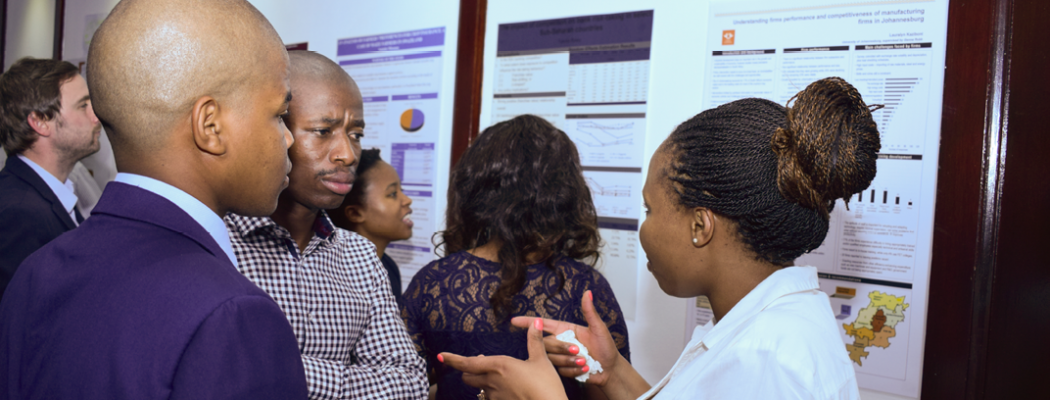Women’s month in South Africa: SA-TIED research offers concrete recommendations to improve women’s lives
The theme for women’s month in South Africa – Generation Equality: Realizing Women's Rights for an Equal Future – could not be more aligned with the policy objectives of the research produced under the SA-TIED programme.Over the past three years SA-TIED has produced a number of cutting edge research papers on realizing equal rights for women in southern Africa – from The influence of household composition on leisure time in South Africa to Globalization and gender inequality.
SA-TIED supports South Africa’s women’s month campaign, which is linked to global efforts to achieve gender equality by 2030, with our very own women’s month policy recommendations.
Drawn from research produced across our work streams, the SA-TIED programme presents these three policy recommendations to help South Africa achieve gender equality by 2030:
Increase leisure time for women
Globally, traditional gender roles within the household are still prevalent due to the persistence of patriarchal systems. As a result, women take on a much larger role in household chores and childcare, leaving them with less leisure time than men.
SA-TIED researchers, Priyanka Harrichurran, Claire Vermaak, and Colette Muller, studied this effect in South Africa and found that on average, a South African woman has 37 minutes less leisure time per day than a South African man, adding up to over 225 hours of lost leisure time per year.
Less leisure time can have negative effects on the overall wellbeing of women – it can be detrimental for their physical and mental health. These effects can also impact productivity within the household and in the labour market – sometimes even contributing to gender gaps in lifetime earnings.
Closing the gender gap in leisure time is therefore important from the perspective of women, feminists, economists, and policy makers alike.
This can be achieved by addressing the gender inequalities that exist in terms of labour market access, income, and unpaid work. Policies that tackle these inequalities will, ultimately, increase the leisure time of women and contribute to South Africa’s goal of achieving gender equality by 2030.
These recommendations are based on research from SA-TIED working paper, The influence of household composition on leisure time in South Africa.
Provide women with child support
As mentioned above, women in South Africa often need to shoulder a larger share of domestic responsibilities than men, especially when it comes to child-rearing. In certain areas of the job market, this can put women at a serious disadvantage – women’s responsibilities at home make them more time-constrained than men.
Trading firms for example make up 70 per cent of employment in South African manufacturing and, as a result have a large impact on the country’s labour dynamics. SA-TIED research on globalization and gender inequality suggests that trading firms raise gender inequality in the country substantially as women’s earnings in trading firms are only 60 per cent of their male colleagues (compared to 64 per cent in non-trading firms).
One explanation could be that trading firms often require their employees to work at unusual hours and travel frequently, putting those employees who are less flexible at a disadvantage.
Government or firm policies that reduce perceived flexibility gaps between men and women have the potential to reduce inequality. Policies related to the provision of childcare institutions or subsidies, a more even distribution between parents of parental leave, or support for technologies such as videoconferencing that can reduce the need for travel, could significantly increase gender equality in South Africa.
These recommendations are based on research from SA-TIED working paper, Globalization and gender inequality.
Equal pay for equal work
The gender wage gap (GWG) is a key indicator of the progress women have made in the labour market, making it a top priority for policy makers. SA-TIED research on the GWG in post-apartheid South Africa reveals how future policies targeting gender wage inequality need to be multifaceted to address the needs of women of different races and education backgrounds, in various occupations, and across the wage distribution.
Women predominantly work in four sectors: domestic services (about 80 per cent of the waged employed in this sector is female); finance (about 44 per cent); trade (about 50 per cent); and services (about 47 per cent). Men, on the other hand, are predominant in the services, trade, finance, manufacturing, and construction sectors. Occupation is an important factor in explaining the GWG. Women continue to be underrepresented in some types of occupations considered ‘male’, this in turn means that women are overcrowded in few occupations considered ‘female’ – typically low paying occupations. This is particularly present among black women, who overwhelmingly fill low paying jobs.
In addition to occupational segregation, analyzing the gender wage gap across the wage distribution is key for creating effective policies – women face specific challenges based on which part of the wage distribution they fall under. For example, while raising the minimum wage at the bottom of the wage distribution might narrow the GWG in this part of the wage distribution, efforts to narrow the GWG at the top end of the wage distribution should focus on increasing the number of women in top-paying occupations.
This will require, among other things, alleviating the disproportionate burden of care work shouldered by women, to enable them to commit more time to the labour market (for example, by subsidizing childcare and providing crèche facilities).
These recommendations are based on research from SA-TIED working paper, Distributional changes in the gender wage gap in the post-apartheid South African labour market.

